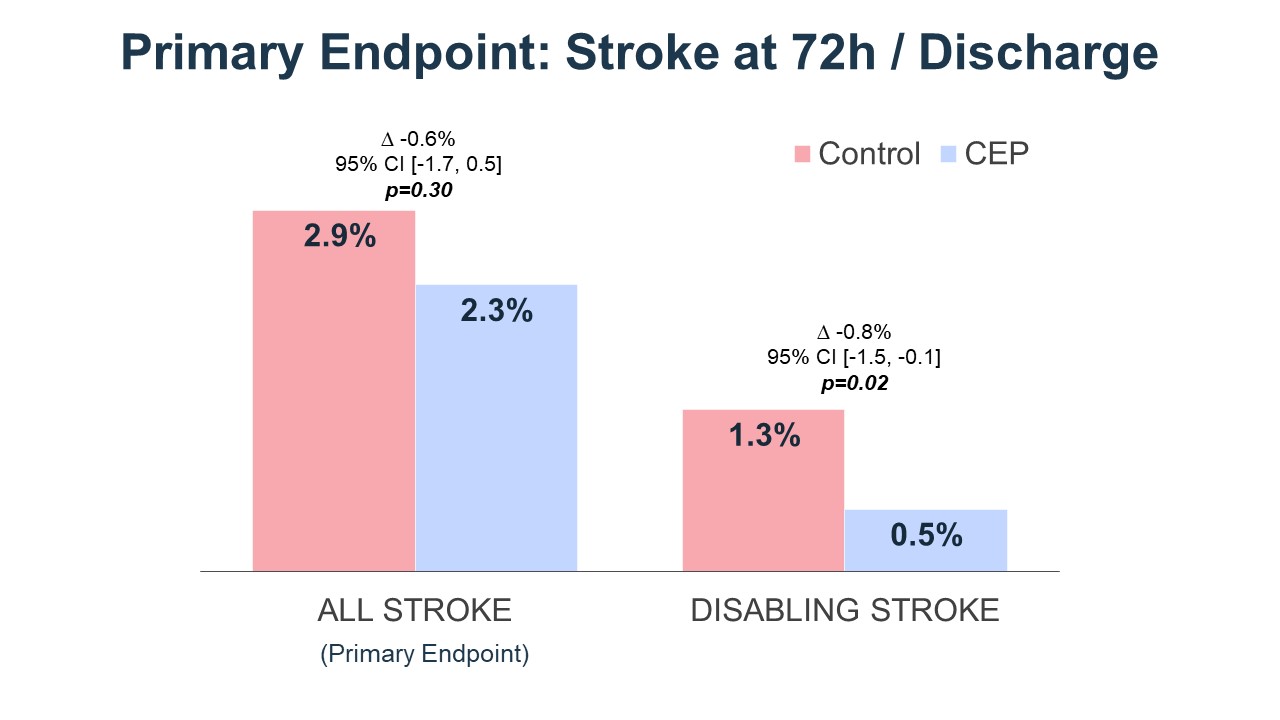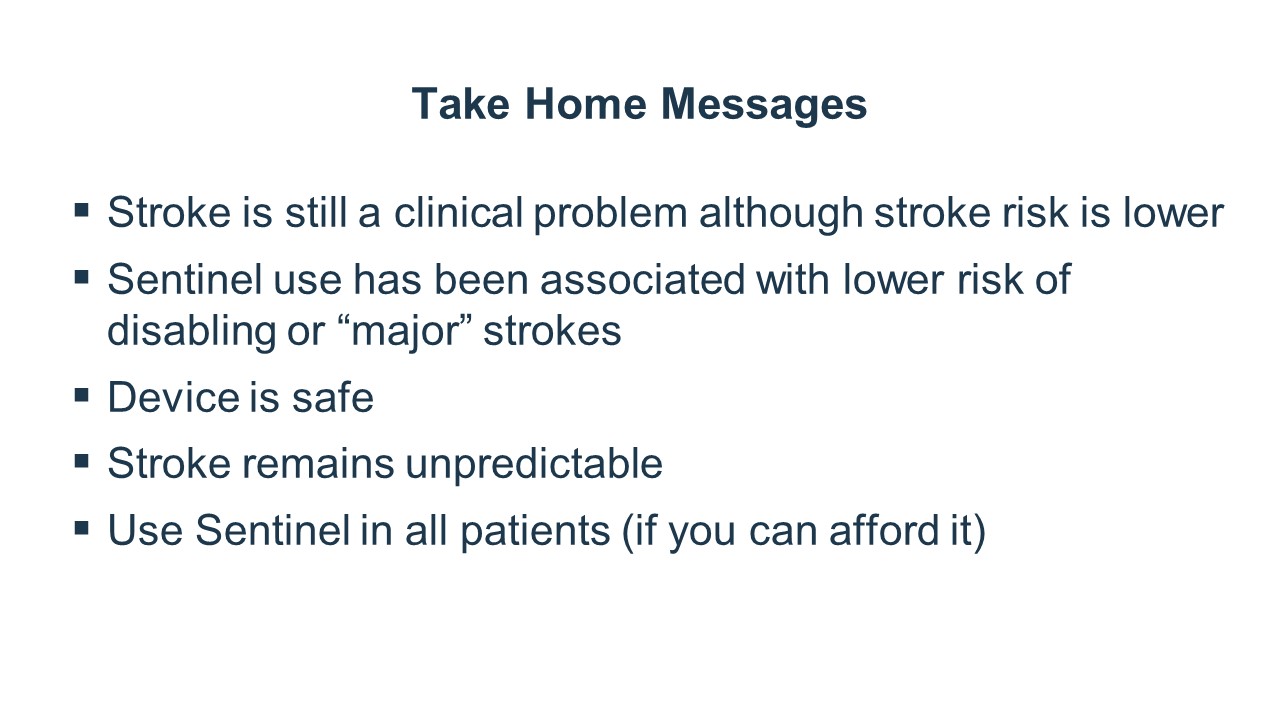News | TCTAP 2023
Statistical and clinical interpretation of the "PROTECTED-TAVR" trial and my take-home messages
Game of Thrones, TAVR vs. SAVR

Samir R. Kapadia
Cleveland Clinic, USA
According to Samir R. Kapadia, MD (Cleveland Clinic, USA) the trial revealed a lower incidence of disabling strokes with protection, and the procedure itself was safe; hence this signifies that it is not the end of the story.
Stroke remains frequent post-transcatheter aortic valve replacement (TAVR), in about 3% to 5% at 1 year, with 50% of events occurring within 3 days and being procedure-related. Stroke post-TAVR is probably under-reported, and its real frequency increases when a neurologist is involved in patient assessment. Half of the strokes are covert events and could have a delayed impact on depression, cognitive function, and quality of life.
Though prior studies have shown that deploying the Sentinel system captures debris in nearly all patients undergoing TAVR and have suggested that doing so may reduce stroke in intermediate- or high-risk cohorts, definitive evidence of a reduction in events remains elusive.
Those who were hoping that the PROTECTED-TAVAR trial would give a clear-cut result and bring closure to the question of whether cerebral embolic protection (CEP) reduces stroke in patients undergoing TAVR were disappointed when the findings were published on NEJM in September 2022.

Figure 1. Comparison in the rate of strokes within 72 hours and prior to discharge
The trial did not meet its primary endpoint, failing to demonstrate a significant difference in the rate of stroke within 72 hours of the procedure or prior to dischargeㅡ2.3% with the use of the Sentinel CEP system (Boston Scientific) versus 2.9% without (P = 0.30) (Figure 1.).
But that’s not the end of the story, according to Kapadia, a global principal investigator, because with CEP there was a lower rate of disabling stroke, a secondary endpoint for which the trial was not powered (0.5% vs 1.3%; P = 0.02).
He told TCTAP 2023 that the trial also showed that the using of CEP was safe with no major complications, and that stroke was an unpredictable eventㅡno specific factors that could be used to identify a patient group most likely to benefit from protection emerged.
“I wouldn’t say it’s negative,” Kapadia said about the trial, adding that it was possible that a larger study could have shown a significant advantage for protection on the primary endpoint. Moreover, he added, “Disabling stroke is a more meaningful outcome for patients.” The use of a CEP device during TAVR did not lead to a significantly lower incidence of periprocedural stroke. Based on the 95% confidence interval around this outcome, however, the results may not rule out a benefit of CEP during TAVR.
He concluded that the use of protection with the Sentinel device should be considered for all patients undergoing TAVR to reduce disabling strokes (Figure 2). The number needed to treat for this purpose was 125.

Figure 2. A take-home message from Kapadia’s lecture
Hot Topics
Game of Thrones, TAVR vs. SAVR
Sunday, May 7, 4:10 PM - 5:30 PM
Valve & Endovascular Theater, Vista 1, B2
Edited by

Young Rak Cho, MD
Dong-A University Hospital, Korea (Republic of)

Samir R. Kapadia
Cleveland Clinic, USA
According to Samir R. Kapadia, MD (Cleveland Clinic, USA) the trial revealed a lower incidence of disabling strokes with protection, and the procedure itself was safe; hence this signifies that it is not the end of the story.
Stroke remains frequent post-transcatheter aortic valve replacement (TAVR), in about 3% to 5% at 1 year, with 50% of events occurring within 3 days and being procedure-related. Stroke post-TAVR is probably under-reported, and its real frequency increases when a neurologist is involved in patient assessment. Half of the strokes are covert events and could have a delayed impact on depression, cognitive function, and quality of life.
Though prior studies have shown that deploying the Sentinel system captures debris in nearly all patients undergoing TAVR and have suggested that doing so may reduce stroke in intermediate- or high-risk cohorts, definitive evidence of a reduction in events remains elusive.
Those who were hoping that the PROTECTED-TAVAR trial would give a clear-cut result and bring closure to the question of whether cerebral embolic protection (CEP) reduces stroke in patients undergoing TAVR were disappointed when the findings were published on NEJM in September 2022.

The trial did not meet its primary endpoint, failing to demonstrate a significant difference in the rate of stroke within 72 hours of the procedure or prior to dischargeㅡ2.3% with the use of the Sentinel CEP system (Boston Scientific) versus 2.9% without (P = 0.30) (Figure 1.).
But that’s not the end of the story, according to Kapadia, a global principal investigator, because with CEP there was a lower rate of disabling stroke, a secondary endpoint for which the trial was not powered (0.5% vs 1.3%; P = 0.02).
He told TCTAP 2023 that the trial also showed that the using of CEP was safe with no major complications, and that stroke was an unpredictable eventㅡno specific factors that could be used to identify a patient group most likely to benefit from protection emerged.
“I wouldn’t say it’s negative,” Kapadia said about the trial, adding that it was possible that a larger study could have shown a significant advantage for protection on the primary endpoint. Moreover, he added, “Disabling stroke is a more meaningful outcome for patients.” The use of a CEP device during TAVR did not lead to a significantly lower incidence of periprocedural stroke. Based on the 95% confidence interval around this outcome, however, the results may not rule out a benefit of CEP during TAVR.
He concluded that the use of protection with the Sentinel device should be considered for all patients undergoing TAVR to reduce disabling strokes (Figure 2). The number needed to treat for this purpose was 125.

Hot Topics
Game of Thrones, TAVR vs. SAVR
Sunday, May 7, 4:10 PM - 5:30 PM
Valve & Endovascular Theater, Vista 1, B2
Edited by

Young Rak Cho, MD
Dong-A University Hospital, Korea (Republic of)


Leave a comment